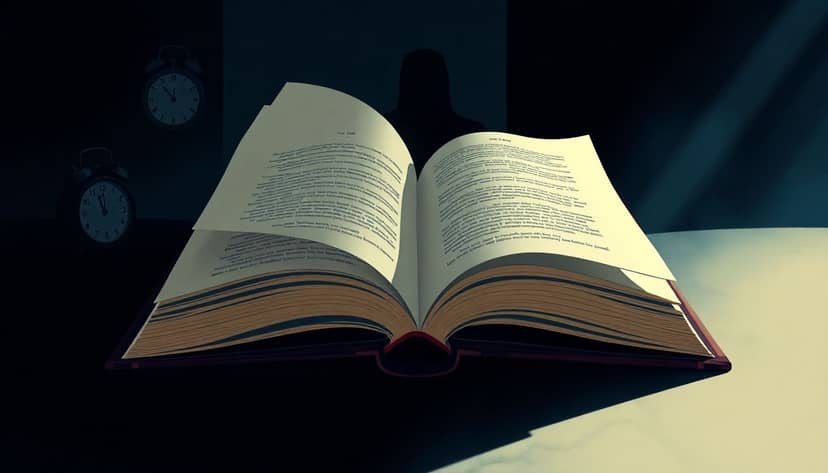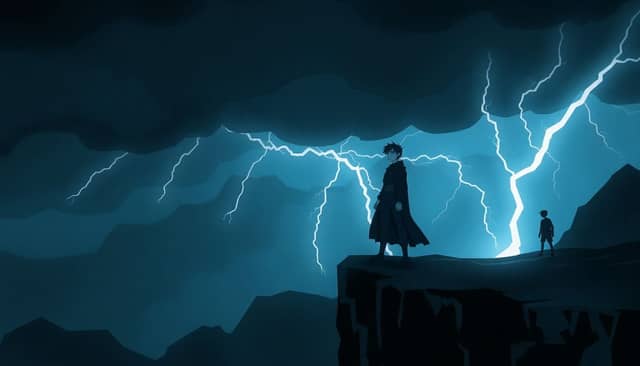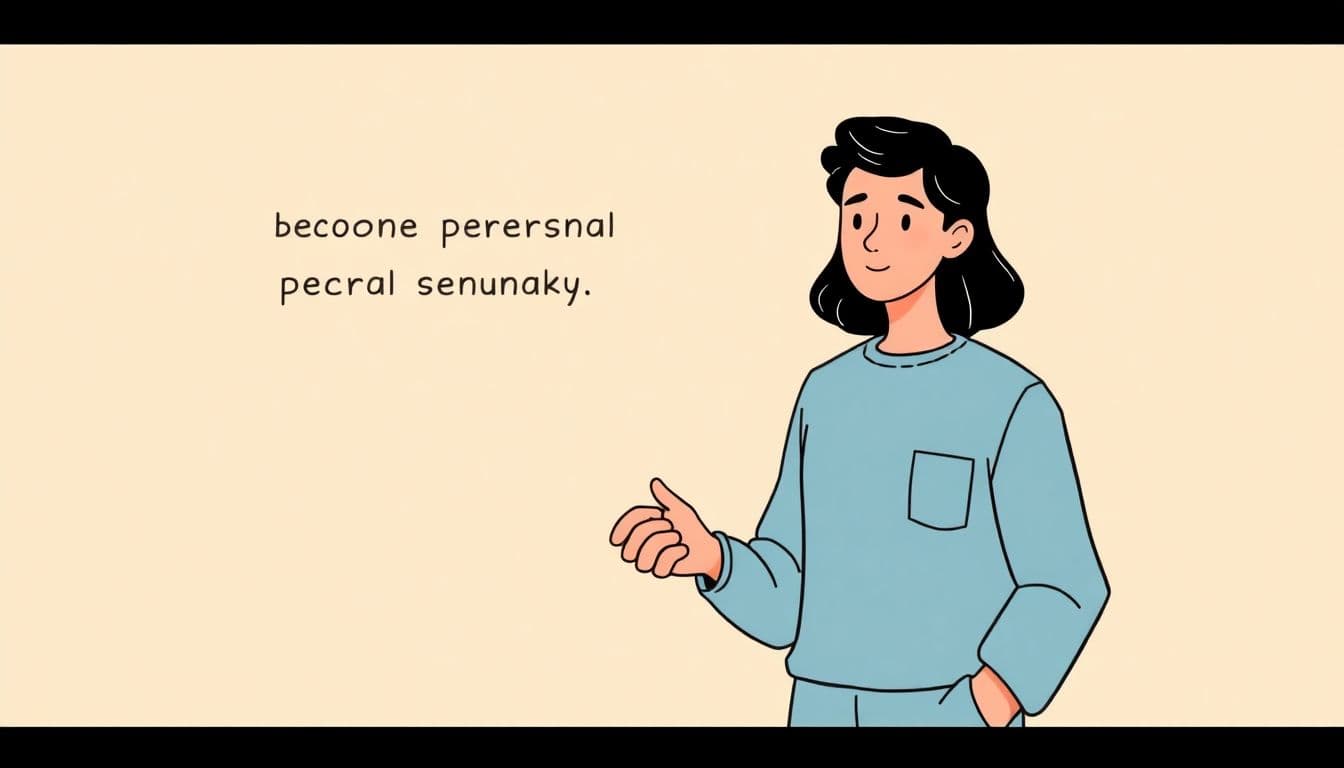Table of Contents
I get it—building suspense isn’t as easy as it sounds. You might start off strong but then watch your readers drift away like bored guests leaving a dull party.
But stick around, because by tweaking a few key things, you’ll have readers glued to your story, biting their nails and begging for more.
Let’s talk about simple, fun ways to amp up suspense—like foreshadowing, cliffhangers, and secrets your characters don’t see coming—that will have everyone hooked.
Key Takeaways
- Kickstart your story right in the middle of action or conflict to quickly grab attention.
- Give subtle hints about future events, making readers eager to uncover what’s next.
- Reveal information to readers before your characters find out, ramping up tension and curiosity.
- Make readers care deeply about characters before placing them at risk to increase emotional investment.
- End chapters with unfinished action, intriguing questions, or sudden twists to encourage readers to keep going.
- Delay revealing key details, gradually sharing secrets to maintain curiosity.
- Use tense, atmospheric settings to heighten suspense and anxiety.
- Incorporate short flashbacks or flash-forwards to tease parts of the story and build anticipation.

Start With an Intense Scene or Conflict
If you’re looking to grab a reader’s attention right away, open your story with a scene full of action, drama, or conflict. Your first scene doesn’t need to be explosive, but it should definitely shake things up right from the get-go.
Think about starting in the middle of a tense moment rather than slowly building up to it, because readers get curious when they’re thrown straight into the action. For example, starting with the protagonist in a dangerous situation like narrowly escaping a car accident or being caught sneaking around somewhere they shouldn’t be immediately sparks curiosity about what’s happening.
A great tip is to craft an opening that’s unusual, raises questions, or gives readers a puzzle they’ll want to solve. Instead of presenting a calm morning routine, throw your readers into a brewing family argument or a mysterious encounter that hints at trouble ahead.
Using this method is why mystery and thriller genres make up 17-20% of the U.S. fiction market right now—people love suspenseful beginnings that hook them fast. You can discover more ideas for intense openings from these murder mystery ideas.
Hint at Future Events Through Foreshadowing
Foreshadowing is all about giving subtle hints or clues early on in your story to suggest what’s coming later. It’s like dropping breadcrumbs for your readers; they notice these little clues and start guessing what’s going to happen next.
Foreshadowing doesn’t have to be obvious or heavy-handed. It can be as simple as mentioning an object that seems insignificant at first but becomes crucial later, like a locked room nobody enters, or casually mentioning a strange noise that’s never explained at the time.
For instance, if you plan to have your character uncover a secret family affair later, hint earlier by showing odd behavior between family members. Lightly introducing these clues makes readers attentive—they’ll want to keep flipping pages to figure out the mystery behind the subtle hints you’ve planted.
You don’t just have to foreshadow scary or dramatic events either; you can foreshadow character developments, relationship changes, or plot twists to make your story even richer and more satisfying when these elements finally emerge.
Build Tension by Revealing Information Readers Know, But Characters Don’t
One proven way to build nail-biting suspense is to give your reader information your main character hasn’t figured out yet. This kind of dramatic irony naturally keeps readers on the edge of their seats because they’re eager to discover how your character will react when they find out the truth.
Say, for example, your protagonist trusts a friend blindly, but your readers already know this friend has a shady past or ulterior motives. Every interaction between these characters will hold extra tension—will the protagonist catch a clue in time, or walk straight into danger?
Another common use of this technique is in horror or thriller stories, where readers see threats that the protagonist is completely unaware of. The classic “there’s a killer hiding in the house” situation makes us desperate to see if and how the character figures it out.
This strategy also lets you play around with other elements creatively. For instance, you can sprinkle hints through dialogue or show how other characters begin to worry, which further ramps up tension and suspense. If you’re into exploring deeper storytelling techniques, you might want to learn about static vs dynamic characters, as mastering character dynamics adds layers to suspenseful storytelling.

Place Characters That Readers Care About in High-Risk Situations
The quickest way to ramp up suspense and keep readers turning pages is to put characters they genuinely care about in situations where there’s something big to lose.
But here’s the tricky part: you gotta make readers actually like your characters first.
That means spending some time showing their relatable sides, quirks, or vulnerabilities, so readers root for them.
After your reader is attached, raising the stakes gets easy—put that beloved character directly in the path of danger, emotional turmoil, or personal loss.
For instance, maybe your protagonist has to decide between defusing a ticking bomb or saving a close friend who’s trapped nearby.
It’s a classic dilemma that makes a story stick like glue, pulling readers deeper because they’re emotionally invested in the outcome.
Genres like Young Adult fiction have exploded in popularity partly due to their gripping, high-stakes scenarios—YA is now considered the most in-demand fiction genre for 2025, with thrillers playing a massive role in its growth.
Create Compelling Chapter Endings and Cliffhangers
You know that feeling when you binge-watch a series because each episode ends on a note you just have to follow up on instantly?
Chapter endings should do the same thing—drop hints, unanswered questions, or surprising twists that practically push readers to turn the next page.
An effective way to do this is stopping mid-action or leaving an important revelation in the air, like a gradual reveal of a hidden motive or an unexpected phone call interrupting a crucial conversation.
For example, end a chapter just as your detective character stumbles upon a shocking clue that changes everything readers assumed was true.
They’ll keep going because their curiosity demands satisfaction, and suddenly it’s 2 AM, and they’re still reading.
That’s partly why mystery, thriller, & crime novels represent around 17–20% of adult fiction sales in the U.S.—writers have perfected the art of the irresistible chapter break.
Keep Secrets and Delay Key Information to Spark Curiosity
Nothing fuels suspense like keeping readers slightly in the dark—at least for a while.
You can’t spill all the beans at once; hold back critical pieces of information and drop them bit by bit.
But be cautious—not giving enough can frustrate your readers, so balance is essential here.
You might reveal a mysterious event in your protagonist’s past that’s influencing their present actions, but only gradually clarify what actually happened.
A great trick is to slowly unveil secrets through interactions between characters instead of telling directly; readers love putting together pieces of a puzzle.
For example, maybe everyone reacts oddly whenever the protagonist mentions their hometown—you can scatter these clues so the reader wants to know why.
If you enjoy this method of storytelling, you can get inspired by reading about how to write a dystopian story that expertly delays information for maximum tension.
Use Your Story’s Setting to Increase Suspense
Your setting doesn’t just give your story a backdrop—it can actively heighten suspense if used cleverly.
Select locations or environments that naturally amplify tension: abandoned buildings, remote areas, crowded events, or situations where escape routes are limited.
Utilize changing weather or darkness to amplify feelings of uncertainty or danger, weaving these details directly into your scene descriptions.
For instance, an intense confrontation on a narrow cliffside during a sudden storm instantly increases reader anxiety.
If your story revolves around an isolated town hiding dark secrets, every community event can subtly underscore unease.
No wonder stories full of suspenseful, atmospheric settings remain so popular—like in romantasy novels, which blend romance, suspense, and fantasy effortlessly.
Add Mystery With Brief Flashbacks or Flash-forwards
Another clever way to amp up suspense is by weaving brief flashbacks or flash-forwards into your narrative.
You can drop tiny memories or visions without explaining them fully at first, leaving readers curious about their significance.
For example, show your protagonist suddenly recalling a traumatic event without giving full context; then slowly build towards revealing what actually took place.
Alternatively, a quick flash-forward can tease critical events yet to come—like a brief glimpse of a character facing danger, prompting readers to wonder how things got there.
Be careful not to overdo it; brief, sprinkled-in scenes are more effective than long explanations or continuous breaks in the narrative.
In fact, if you’re stuck figuring out how to weave compelling and suspenseful scenes, you might find creative inspiration from these horror story plot ideas.
FAQs
Opening with a high-intensity moment immediately grabs reader attention and creates a strong emotional connection. It introduces intrigue and raises immediate questions, pulling readers deeper into the story right from the first page.
Foreshadowing subtly suggests important plot developments yet to occur. By offering hints without fully revealing outcomes, it keeps readers guessing and raises anticipation, encouraging them to continue reading to see how events unfold.
Ending chapters with cliffhangers maintains momentum because readers are eager to discover resolution. This technique prompts readers to move to the next chapter immediately, sustaining interest and maintaining pace throughout your story.
Settings significantly influence suspense by shaping atmosphere and mood. An isolated or dangerous environment heightens uncertainty, discomfort, or urgency, intensifying suspense and deepening readers’ engagement with characters and plot events.



